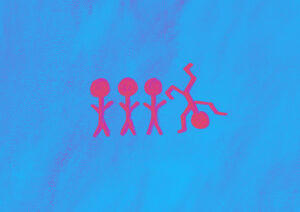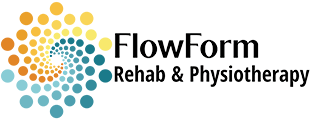Neurodiversity 3 of 7: Neurotypes & natural differences

Neurodiversity can be defined as the natural diversity or variation of cognitive function in all people. Just like all humans have different types of eye colour or hair colour, our brains have different ways of functioning. This creates unique presentations of brains that have unique skills, abilities and needs. A “neurotypical” person is described as possessing the presentation of brain function that is most common in the population, and a “neurodivergent” person is one whose brain function is most different from the most common presentation. Examples of neurodivergent states are: Autism spectrum (ASD), Attention Deficit Hyperactivity Disorder (ADHD), dyslexia, dyscalculia, dyspraxia, dysgraphia and other variations in how brains work. In this article, I will focus mostly on autism (ASD) and ADHD, simply because they are the most common forms of neurodivergence and because I can speak from personal experience, as well as the personal experiences of my friends, family and patients.
It became glaringly clear very soon in the research that neurodivergent states are much more common than generally believed, and they are also much more hidden than generally believed. The common images of ASD and ADHD we have as naughty or disabled children who can’t sit still or are flapping their hands as they scream in the corner are very misguided, and only represent a tiny proportion of the neurodivergent population. Also, many behaviours we accept as autistic or ADHD are actually coping mechanisms and trauma responses, and have nothing to do with the natural differences in the brain.
The human brain is a vastly complex and largely unknown system in itself, even before we start looking at the outliers of diversity. It has many facets representing its functions, like the way it learns, the way it remembers things, the way it processes sensory information and the way it responds to stress. Each and every human has a unique combination of these facets, creating a world where every single human is indeed special. When brain functions vary so much that they differ hugely from the way most people’s brains function, this is described as neurodivergence. Each neurodivergent person is also unique unto themselves, even within categories themselves. Many neurodivergent states overlap in function or occur together, so classifying them really is a nightmare.
Many neurodivergents now prefer to call themselves simply “neurodivergent”, because listing all their diagnoses can become a real tongue twister. One online neurodivergent advocate I follow has Autism, ADHD, OCD and dyslexia, and has also struggled with anxiety and depression long enough to have received those diagnoses from his mental health professionals. The thing about mental health diagnoses is that most people never get ‘undiagnosed’ when they feel better, and there is no clear distinction made between conditions that can get better (e.g. anxiety) and diagnoses that simply describe the way your brain functions and will never go away (e.g. ADHD). So we all collect diagnosis after diagnosis, many of them misdiagnosed, and none of them actually help us figure out how to practically help ourselves. Misdiagnosis is especially a problem in women, because historically most neurodivergent research has been done on boys and men, and neuroscience is only now starting to realize the vast differences between male and female brains and the consequences of misunderstanding that.
The DSM-5, the Diagnostic and Statistical Manual of Mental Disorders, is a reference book about mental health and brain-related conditions and disorders. Right now, both Autism and ADHD are listed as conditions in this book, and the criteria stated in this book are used for diagnostic purposes. The trouble is, these criteria are based on what an Autistic or ADHD person may look like from the outside, as seen by a neurotypical observer, rather than describing their actual felt experience.
Because of this, and because there are still many misconceptions of neurodivergent concepts in the public field as well as the professional field, I invite you to take everything that is prescribed in the DSM-5, as well as any other model of categorizing these concepts with a grain of salt, or a bucket of salt may be better.
In the end, it’s all about what information is helpful and valuable for you and your loved ones. All information about health should be helpful, instead of creating fear and insecurity. When reading about these concepts, even here on this blog, take this into consideration and take only what feels true for you. There is no single person for whom everything will apply in the exact way it is described, and there is much more variety in our brains waiting to be discovered.
Read the next article in the series: Neurodiversity 4 of 7: Our sensory systems
Read the next article in the series: Neurodiversity 4 of 7: Our sensory systems
Resources
If any of this feels familiar to you, I encourage you to do more of your own research. When it comes to neurodiversity, it’s not about labeling yourself – it’s about understanding yourself. The resources below can help you get started.
One small word of caution: never label anyone else. Never tell your spouse/friend/brother/mother “I think you might be autistic”. It will not go down well. Allow people to discover themselves in their own time. Their neurodivergent brain is theirs, and theirs alone.
I put together a resource pack for neurodivergents to help them on their journey of self-discovery. If you are neurodivergent, or think you might be, or even if you’d simply like to learn more about it, download your free copy here: Neurodivergent Life: Simple Tools & Resources to Guide You Down the Rabbit Hole.
I also started a WhatsApp support group for neurodivergents since the public talks I gave, and this group has been a valuable space for sharing tools and helping each other understand and cope. Find the invite link here:
If you think you may be neurodivergent, take this online quiz to find out if you may have some neurodivergent traits: Neurodivergent traits Questionnaire NTQ (link button). This questionnaire is for self-understanding purposes only and does NOT serve as a diagnosis.
- Share:
You may also like




